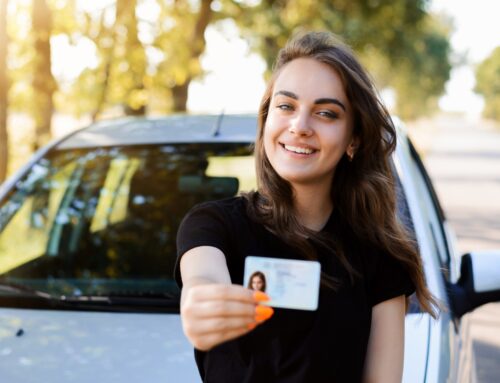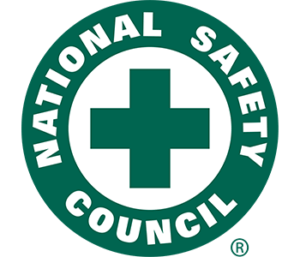Winter driving can be a daunting task for many drivers, with slippery roads, reduced visibility, and unpredictable weather conditions posing significant challenges. However, by following some essential safety tips, you can ensure a smooth and safe journey during the winter season.
In this comprehensive guide, we will cover the five most crucial winter driving safety tips that every driver should know. From preparing your vehicle for winter conditions to navigating icy roads, we will provide you with the knowledge and tools you need to stay safe on the road this winter.
Whether you’re a seasoned driver or a beginner, this guide will help you navigate the unique challenges of winter driving and ensure that you arrive at your destination safely. Let’s dive into the essential winter driving safety tips that will help you conquer the roads this winter.
1. Prepare Your Vehicle for Winter
Before hitting the road in winter, it’s essential to prepare your vehicle for the challenging conditions ahead. Start by checking your tires to ensure they have sufficient tread depth and are properly inflated. Winter tires are highly recommended for improved traction on snow and ice.
Additionally, make sure your vehicle’s battery is in good condition, as cold weather can put extra strain on it. Check your antifreeze levels and consider using a winter-grade windshield washer fluid to prevent freezing. It’s also a good idea to pack an emergency kit with essentials like blankets, a flashlight, and non-perishable food in case of a breakdown.
Expert Insight: According to AAA, having the right tire pressure is crucial for optimal traction and handling in winter conditions. Underinflated tires can reduce grip and stability, increasing the risk of accidents.
2. Drive Cautiously in Winter Conditions
When driving in winter, it’s essential to adjust your driving habits to accommodate the slick and unpredictable road conditions. Reduce your speed and increase your following distance to allow for longer stopping distances on icy roads. Avoid sudden movements like harsh braking or accelerating, as these can cause your vehicle to skid.
Use extra caution when approaching bridges, overpasses, and shaded areas, as these are often the first to freeze over. If you encounter black ice, remain calm, and avoid making sudden steering inputs or slamming on the brakes. Instead, gently steer in the direction you want to go and gradually apply the brakes to regain traction.
Real-World Case Study: A driver in Michigan avoided a potentially serious accident by following proper winter driving techniques when encountering black ice on a highway overpass. By remaining calm and steering gently, the driver was able to regain control of the vehicle and safely navigate the icy patch.
3. Maintain Visibility in Snowy Conditions
Poor visibility is a common challenge when driving in winter, especially during snowstorms or heavy precipitation. To maintain visibility, make sure your windshield wipers are in good condition and replace them if they streak or leave residue behind. Keep your windshield washer fluid topped up and use your defroster to prevent fogging on the inside of the windshield.
It’s also crucial to clear snow and ice from all windows, mirrors, and lights before setting off on your journey. This not only improves visibility but also prevents snow from blowing onto other vehicles or causing accidents. If visibility is severely reduced, consider pulling over in a safe location until conditions improve.
4. Be Prepared for Emergencies
Despite taking all necessary precautions, emergencies can still occur when driving in winter conditions. It’s essential to be prepared for unexpected situations by carrying a fully stocked emergency kit in your vehicle. This kit should include essentials like a first aid kit, jumper cables, a shovel, and a portable phone charger.
In the event of a breakdown or accident, stay with your vehicle and call for assistance if needed. Use hazard lights or flares to alert other drivers to your presence and stay warm by running the engine for short intervals while ensuring proper ventilation to prevent carbon monoxide buildup.
Industry Recommendation: The National Safety Council advises drivers to have a fully charged cell phone with emergency numbers saved in case of an emergency. Being able to call for help quickly can make a significant difference in the outcome of a roadside emergency.
5. Stay Informed and Plan Ahead
Before embarking on a winter journey, it’s crucial to stay informed about weather conditions and road closures along your route. Check local weather forecasts and road condition updates to ensure you’re aware of any potential hazards or delays. Plan your route in advance and share your itinerary with a friend or family member for added safety.
If weather conditions deteriorate during your journey, consider finding a safe place to pull over and wait out the storm. Avoid taking unnecessary risks or pushing through dangerous conditions, as the safety of you and your passengers should always be the top priority.
Frequently Asked Questions
Q: How often should I check my tire pressure in winter?
A: It’s recommended to check your tire pressure at least once a month in winter, as cold temperatures can cause fluctuations in tire pressure.
Q: What should I do if my vehicle starts to skid on ice?
A: If your vehicle begins to skid on ice, remain calm, and steer gently in the direction you want to go. Avoid slamming on the brakes or making sudden movements.
Q: Is it necessary to use winter-grade windshield washer fluid?
A: Winter-grade windshield washer fluid is recommended in cold weather, as it contains additives to prevent freezing and improve visibility.
Q: How can I prevent my windows from fogging up in winter?
A: To prevent fogging on the inside of your windows, use your vehicle’s defroster and ensure proper ventilation by cracking a window slightly.
Q: What should I do if I get stuck in snow while driving?
A: If your vehicle gets stuck in snow, try rocking it back and forth gently to gain traction. Use sand, kitty litter, or traction mats for added grip.
Q: Should I turn off my engine if I’m stranded in a snowstorm?
A: While it’s important to conserve fuel, it’s crucial to run the engine for short intervals to stay warm. Make sure the exhaust pipe is clear to prevent carbon monoxide poisoning.
Q: How can I improve my visibility in heavy snowfall?
A: To improve visibility in heavy snowfall, reduce your speed, use your low beams, and increase following distance to allow for better reaction time.
Q: What items should I include in an emergency kit for winter driving?
A: An emergency kit for winter driving should include essentials like blankets, a flashlight, non-perishable food, water, a first aid kit, jumper cables, a shovel, and a portable phone charger.
By following these essential winter driving safety tips, you can navigate the challenges of winter roads with confidence and peace of mind. Remember to prepare your vehicle, adjust your driving habits, maintain visibility, be prepared for emergencies, and stay informed and plan ahead for a safe and smooth winter journey.
Stay safe on the roads this winter and remember that your safety and the safety of others should always be the top priority. Drive cautiously, stay alert, and be prepared for whatever the winter season may bring. Safe travels!







